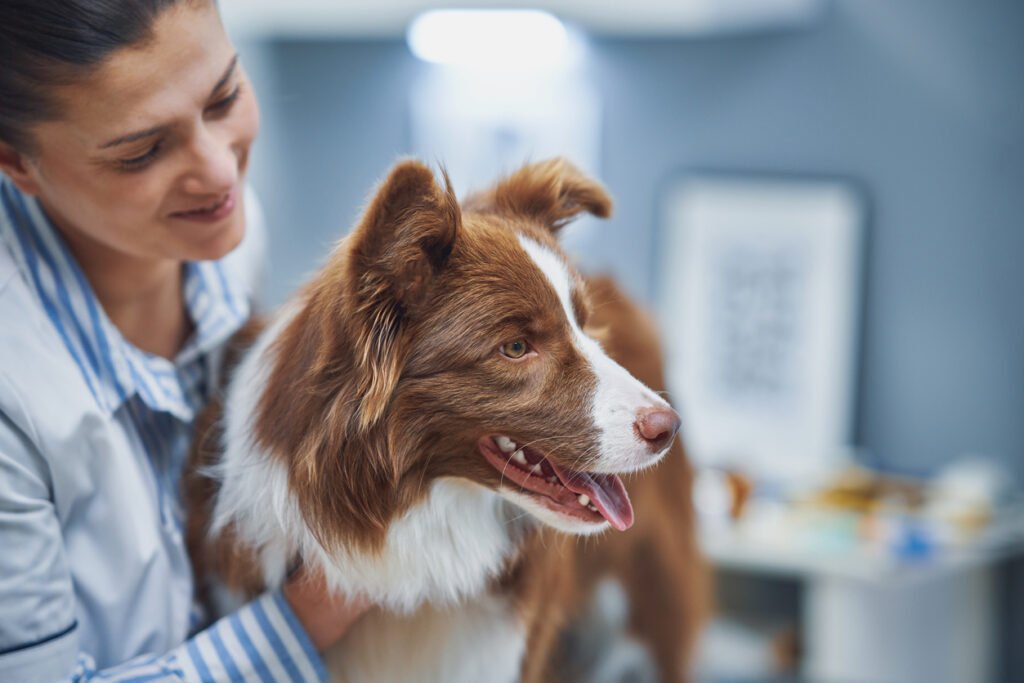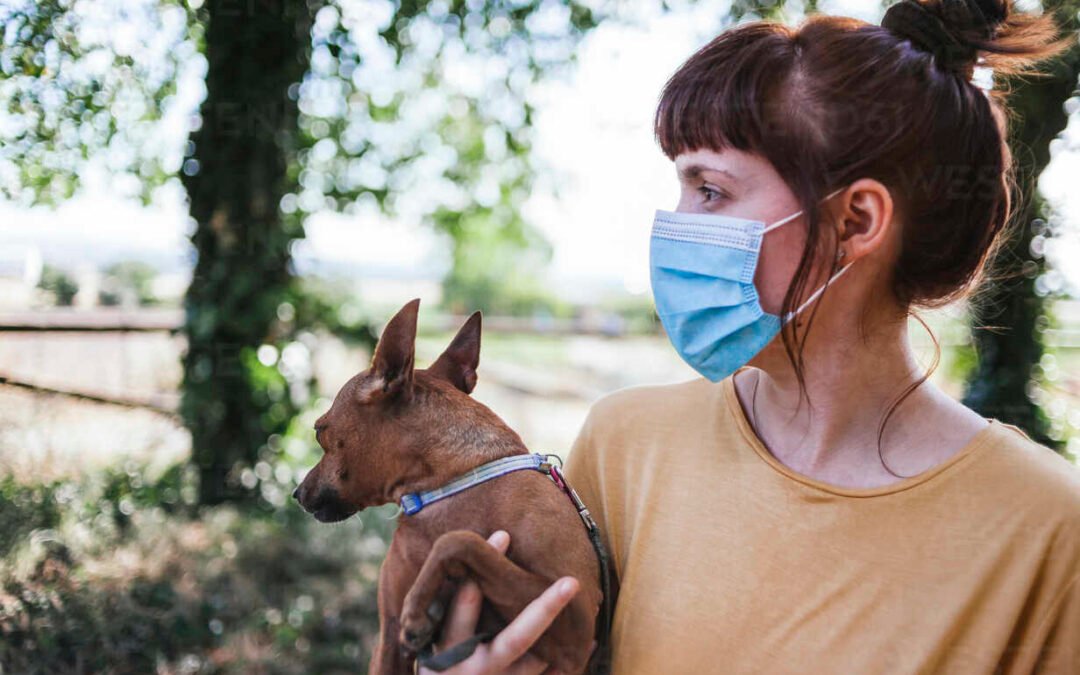Are you noticing that your furry friend seems a little uneasy around people wearing face masks? Is your dog scared of face masks? You’re not alone. Many dogs are experiencing fear and anxiety when encountering these essential protective coverings. In this article, we will explore why some dogs may be afraid of face masks and provide helpful tips to help them overcome their fears.
Dogs rely heavily on visual cues to understand the world around them. When they encounter someone wearing a face mask, their ability to read facial expressions and body language is compromised. This sudden change in their normal perception can be unsettling and confusing for them, which may result in fear or anxiety.
Understanding the root cause of your dog’s fear is the first step in helping them overcome it. We will delve into the common triggers and signs of fear in dogs, as well as effective techniques to desensitize them to face masks. By following our expert advice and practicing patience and consistency, you can help your furry companion feel more at ease around face masks and ensure their overall well-being.
Stay tuned to discover how you can support your dog during these challenging times and restore their confidence in the presence of face masks.
Table of Contents

Why are some dogs afraid of face masks?
The fear that some dogs exhibit towards face masks can be attributed to several factors. Primarily, dogs are highly visual animals that rely on facial expressions and body language to understand human emotions and intentions. When a person wears a face mask, it obscures a significant portion of their face, making it difficult for dogs to read those crucial visual cues. This sudden alteration in appearance can lead to confusion and anxiety, as the dog may not recognize the person they once felt comfortable with.
Additionally, many dogs are sensitive to changes around them. When face masks became common during the pandemic, it was sudden and confusing for some dogs. Dogs thrive on routine, so any change in their familiar surroundings or with the people they know can cause them to feel afraid. If a dog hasn’t been gradually introduced to face masks or similar changes, they may feel uneasy around anyone wearing one, linking it to something unfamiliar or uncomfortable.
Additionally, the sound associated with wearing a mask, such as the rustling of fabric or the muffled voice of the person behind the mask, can further exacerbate a dog’s anxiety. These auditory cues, combined with the visual changes, create a scenario where the dog feels unsure about their surroundings. For these reasons, understanding the root causes of a dog’s fear is essential for addressing the issue effectively and compassionately.
Signs of fear in dogs when encountering face masks
Recognizing the signs of fear in dogs is crucial for timely intervention. Dogs may exhibit a range of behaviors when they are anxious or scared of face masks. Common signs include cowering, hiding, or attempting to escape the situation. A dog that suddenly retreats or seeks comfort from its owner is likely feeling threatened by the presence of someone wearing a mask.
Another indication of fear can be changes in body language. A dog might display flattened ears, a tucked tail, or stiffened posture when encountering a masked individual. These physical responses signal that the dog is uncomfortable and trying to communicate its distress. Additionally, some dogs may vocalize their fear through barking or whining, which can be their way of expressing anxiety or discomfort in the presence of masked people.
In some cases, dogs may also engage in compulsive behaviors when faced with their fear, such as excessive licking, panting, or pacing. These actions can serve as coping mechanisms to deal with their anxiety. Understanding these signs is essential for pet owners to recognize when their dogs are struggling and to respond appropriately to help alleviate their fears.

Understanding the fear response in dogs
To effectively assist dogs in overcoming their fear of face masks, it’s vital to comprehend the underlying mechanisms of their fear response. When dogs perceive a threat—such as an unfamiliar sight or sound—they activate their fight-or-flight response. This instinctual reaction is a survival mechanism that prepares them to either confront the threat or escape from it. In the case of face masks, the unfamiliarity and perceived threat can trigger a heightened state of anxiety.
The fear response is not merely a reaction to a visual stimulus; it is deeply rooted in a dog’s past experiences and socialization. A dog that has had limited exposure to people wearing masks may be more susceptible to developing fear. Conversely, a well-socialized dog that has been gradually introduced to various stimuli is likely to cope better with such changes. Understanding that fear is often a learned behavior can help owners approach the situation with empathy and patience.
Moreover, the emotional state of the owner can significantly influence a dog’s response to fear. Dogs are adept at reading human emotions and may pick up on their owner’s anxiety or tension when encountering a masked person. This mirroring effect can exacerbate the dog’s fear, creating a cycle of anxiety that is difficult to break. Recognizing this dynamic is crucial for fostering a calm environment where the dog can learn to feel safe and secure.
Helping dogs overcome their fear of face masks
Helping dogs overcome their fear of face masks requires a thoughtful and systematic approach. The first step is to create a positive association with the presence of a mask. This can be done gradually by introducing the mask in a controlled environment where the dog feels safe. For instance, the owner can wear the mask while engaging in enjoyable activities with their dog, such as playing or providing treats. This method helps the dog link the mask with positive experiences rather than fear.
In addition to positive associations, it is essential to respect the dog’s comfort level. If the dog shows signs of distress when the mask is introduced, it’s crucial not to force the interaction. Instead, allow the dog to explore the mask at their own pace. Offering treats or praise when the dog shows curiosity towards the mask can encourage a more relaxed attitude over time. Patience and consistency are key components in this process, as it may take time for the dog to adjust to the new visual stimulus.
Furthermore, desensitization techniques can be beneficial in helping dogs overcome their fear of face masks. This involves gradually exposing the dog to the mask in various scenarios, starting from a distance and gradually increasing proximity as the dog becomes more comfortable. With time and gentle exposure, dogs can learn that face masks are not inherently threatening, enabling them to feel more at ease in situations where they encounter masked individuals.

Gradual desensitization and counterconditioning techniques
Gradual desensitization is a powerful method for helping dogs overcome their fear of face masks. This technique involves slowly introducing the dog to the feared object in this case, the face mask while ensuring the experience remains positive. The process begins with the dog observing the mask from a distance where they feel comfortable. This distance is critical, as it allows the dog to remain relaxed and not overwhelmed.
Once the dog shows signs of calmness at a distance, the owner can gradually decrease the space between the dog and the mask. Each time the distance is reduced, the owner should reward the dog with treats and praise to reinforce the positive behavior. This method helps the dog associate the mask with good experiences rather than fear. The key is to take small, manageable steps; rushing the process can lead to increased anxiety and setbacks.
Counterconditioning complements desensitization by changing the dog’s emotional response to the face mask. Instead of reacting with fear, the goal is to help the dog feel happy and calm. This can involve pairing the appearance of the mask with high-value treats or engaging activities, making the mask a signal for something enjoyable. For instance, if the dog sees a person wearing a mask and receives a treat immediately after, they begin to associate the mask with positive outcomes. Through repeated exposure and positive reinforcement, dogs can learn to overcome their fear of face masks over time.
Positive reinforcement training for dogs with fear of face masks
Positive reinforcement training is an effective strategy for addressing a dog’s fear of face masks. This approach involves rewarding desired behaviors to encourage their repetition, creating an environment where the dog feels safe and supported. The foundation of this training is to reward the dog whenever they exhibit calm behavior in the presence of a mask. This could include sitting quietly, approaching the mask, or simply not reacting negatively.
To implement positive reinforcement effectively, it’s essential to use high-value rewards that motivate the dog. Treats, praise, and playtime can all serve as incentives. For example, when introducing the mask, the owner can wear it while offering treats to the dog. If the dog remains calm and composed, it should receive a reward immediately. This immediate reinforcement helps the dog make connections between calm behavior and positive outcomes, strengthening their confidence.
Additionally, consistency is crucial in positive reinforcement training. Owners should aim to practice regularly, gradually increasing the difficulty of the exercises. This consistency helps the dog understand that encountering a face mask is a normal part of their environment and that they can trust their owner to provide support during these encounters. Over time, this approach fosters a stronger bond between the dog and owner, further alleviating anxiety and fear.
Seeking professional help for severe cases
In some instances, a dog’s fear of face masks may be severe enough to require professional assistance. If the fear is significantly impacting the dog’s quality of life or causing aggressive behavior, it is essential to seek help from a qualified dog trainer or behaviorist. These professionals can provide tailored guidance and techniques that are specifically suited to the dog’s needs, ensuring a safer and more effective approach to overcoming fear.
Professional trainers can assess the situation and develop a structured plan that incorporates both desensitization and positive reinforcement techniques. They often have experience working with anxiety-related issues and can offer insights that may not be apparent to the dog owner. Furthermore, trainers can help ensure that the owner is equipped with the necessary skills to manage the dog’s anxiety and create a supportive environment throughout the process.
Additionally, in more severe cases, veterinarians may recommend behavioral medications to help manage anxiety levels during training. These medications can be beneficial in reducing the dog’s overall stress and making it easier for them to engage in training sessions. A veterinarian can provide guidance on the appropriate options, ensuring that the dog’s health and well-being remain a priority throughout the treatment process.

Creating a safe and comfortable environment for dogs
Establishing a safe and comfortable environment for dogs is vital in helping them cope with their fear of face masks. A dog’s home should be a sanctuary where they feel secure and relaxed. This can be achieved by creating a designated safe space, such as a cozy corner with their bed and favorite toys, where they can retreat when feeling anxious. Providing a space that is all their own helps dogs feel more in control and less stressed in unfamiliar situations.
In addition to a physical space, the overall atmosphere of the home can influence a dog’s emotional state. Owners should strive to maintain a calm demeanor, as dogs are sensitive to human emotions. Engaging in soothing activities, such as playing soft music or using calming pheromone diffusers, can create a relaxing ambiance. This peaceful environment allows dogs to feel more secure and less anxious about the world beyond their home.
Moreover, regular routines can provide a sense of stability for dogs. Establishing consistent feeding, exercise, and playtimes helps dogs anticipate their daily activities, reducing anxiety related to unpredictability. When dogs know what to expect, they are more likely to feel relaxed and confident. Combining these strategies creates a supportive environment where dogs can gradually learn to face their fears, including the presence of face masks.
Managing dog’s fear during encounters with face masks
Managing a dog’s fear of face masks requires simple, proactive steps and some planning. Dog owners should be ready for situations where they might encounter people wearing masks, like during walks or in public places. Having a plan can help reduce stress for both the dog and the owner. For example, choosing quieter times or less crowded areas can make it easier for a dog to stay calm.
When coming across someone with a mask, it’s important for the owner to stay calm and relaxed. Dogs often look to their owners to understand how to react, so a calm response can reassure the dog. If the dog starts showing signs of fear, the owner can try techniques like offering treats or engaging the dog in a fun activity to help them relax. This distraction can help shift the dog’s focus away from the mask and encourage a positive response.
Practicing with masks in a safe place can also be helpful. Dog owners can have friends or family members wear masks during training sessions to help the dog get used to the sight of a mask. This gradual approach can reduce the dog’s fear over time. With these simple strategies, dogs can learn to handle encounters with masked people more confidently and calmly.
Conclusion
Helping my dog feel comfortable around face masks has been a journey of trust and patience. Is your dog scared of face masks? If so, you’re not alone. Many pets feel uneasy around people wearing masks, which can make outings or visits a bit stressful. I’ve found that building confidence in my dog during these encounters requires a blend of compassion, patience, and understanding.
I started by recognizing what might be causing my dog’s fear. Maybe it’s the unfamiliar appearance or the inability to read facial expressions. Understanding these factors helped me choose effective strategies to ease their anxiety. Techniques like gradual desensitization and positive reinforcement training have been especially helpful. By introducing the mask slowly and rewarding calm behavior, I noticed my dog’s fear beginning to fade.
Each time my dog remains calm near someone wearing a mask, I celebrate with a treat or affection, helping them form a positive association. Over time, this process of linking face masks to good experiences has helped my dog build confidence. This journey has strengthened our bond and made both of us more resilient in navigating the world.
Helping my dog feel secure is an ongoing commitment, but seeing their confidence grow is incredibly rewarding. By taking this time to support my dog, I’m ensuring they feel safe, loved, and ready to handle a world where face masks are now part of everyday life. With patience and dedication, we’re both finding a new level of trust and connection.

